Murray recently joined the Rhino River Lodge team in the position of Junior Ranger. Though young, Murray has already proved himself a mature and responsible member of our team, and best of all, an enthusiastic and knowledgeable game ranger. He has even become a valuable assistant to our general manager helping out on the reserve and in the camp. To top it all off, Murray is also a talented photographer. Here we get to know him a little bit better.
What led to your position at Rhino River Lodge?
I was talking to a friend of mine that is managing a neighboring lodge and he told me there was a position at Rhino River Lode. A phone call and an interview later, I was here and haven't looked back since.
What aspect of your new position are you most excited about?
Most definitely the variety of things that I do and being able to try challenge myself and learn new things.
What is your favourite part of being a game ranger?
Wow, there are so many reasons but I must stay showing people animals that they have never seen before and opening their eyes to the whole environment as a big picture and not just ow everyone sees it on TV.
What advice would you give someone coming on safari for the very first time?
Make sure you've got your camera ready and an open mind to make the most of everything. These memories can last a lifetime.
Do you have a favourite animal to view on game drives?
I must say that I'm not phased because everything in nature has good interesting things about them, but if I had to pick it would be an elephant just because they never fail to impress and are always doing something new and interesting.
What do you love best about living in the bush?
The best thing about living in the bush is that everyday is different and you never know what to expect. It is such a privilege to be able to work so closely with animals in a much less stressful environment than in a city.
Wednesday, April 26, 2017
Best collective nouns for animals on safari
On an African safari, if you have a knowledgeable game
ranger, you are likely to learn all sorts of new and interesting
information about the animals you see. One of our favourite bits of
information to share are the collective nouns used for some of the
species.
A collective noun is the name given to a group of animals. While many are common and well-known (like herd, flock, or pride), there are many lesser known but fantastically descriptive terms used to describe African animals.
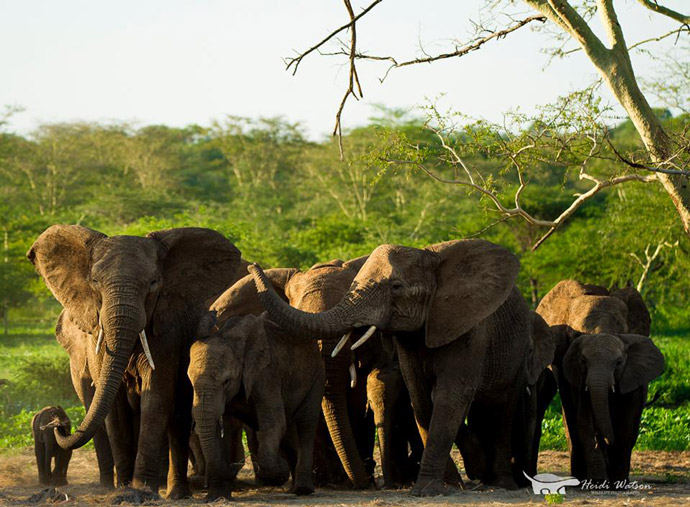

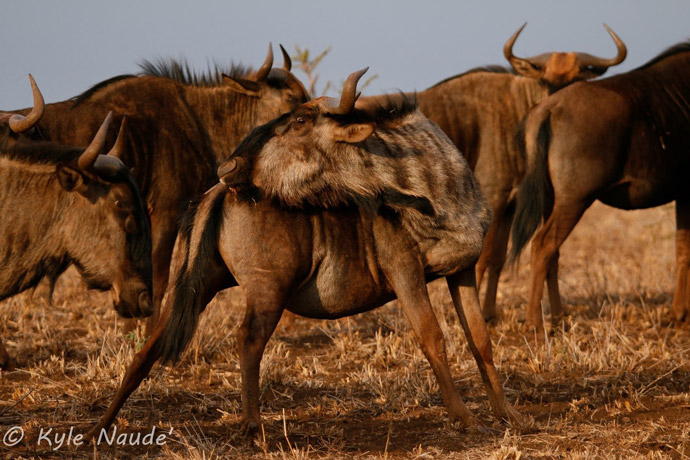
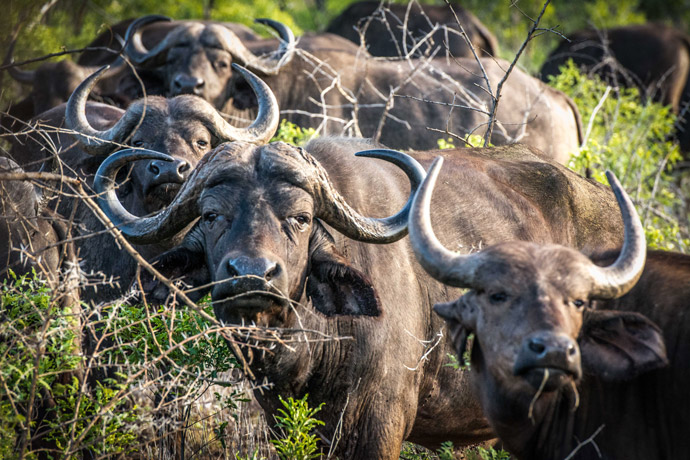
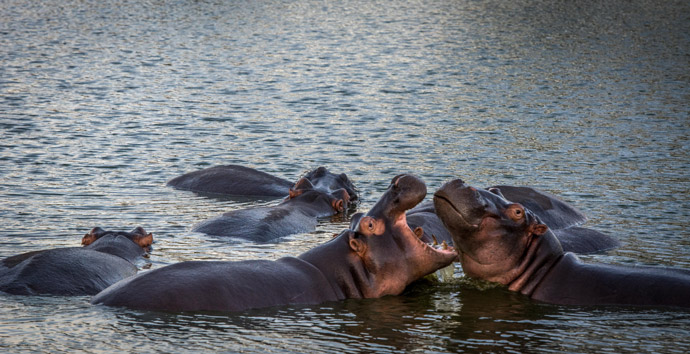
Memories, dazzles, towers, crashes, confusions, obstinacies and bloats! We’ve got them all at Rhino River Lodge. Start planning your safari to see them for yourself.
Originally published at Africa Geographic.
A collective noun is the name given to a group of animals. While many are common and well-known (like herd, flock, or pride), there are many lesser known but fantastically descriptive terms used to describe African animals.
Elephants
A group of elephants is called a ‘memory’ of elephants. This is in reference to their strong family ties, intelligence, and reputedly long memories.
Zebra
Sometimes the most interesting animals on safari aren’t the large predators, but the more common species that manage to capture our imaginations. Zebra are one of the most strikingly beautiful animals in the African bush and it’s not difficult to see why a group of zebra is called a ‘dazzle’ of zebra.Giraffe
Giraffe are another iconic African species and always a firm favourite with our guests. A group of giraffe is called a ‘tower’ of giraffe, as their heads can often be seen sticking high above the trees on the horizon.
Rhino
A personal favourite here at Rhino River Lodge, the term for a group of rhinos is a ‘crash’. It is particularly apt for black rhinos as at they generally come crashing through the bush towards you and then crashing right back away again as soon as they investigate what you are.Wildebeest
The term for a group of wildebeest (also known as gnu) is a ‘confusion’ of wildebeest. This probably originates from the noise and confusion that happens in large migratory movements of wildebeest, like the Serengeti’s great migration, but we think it could also refer to the rather comical appearance of the animal. Described by entertainingly by Ambrose Bierce as “an animal of South Africa, which in its domesticated state resembles a horse, a buffalo and a stag. In its wild condition it is something like a thunderbolt, an earthquake and a cyclone.”
Buffalo
A group of buffalo is aptly referred to as an ‘obstinacy’ of buffalo. Considering their bulky bodies, stubbornness and tendency to stay in large, protective herds, this is a prime example of a collective noun that takes its inspiration directly from the characteristics of the animal being described.
Hippo
Spending their days lazing in the water, and nights grazing on the river banks, a group of hippos is fittingly called a ‘bloat’. While this may sound a little funny, coming across a bloat of hippos out of the water is no joke as hippos are widely considered to be the most dangerous animal in Africa.
Memories, dazzles, towers, crashes, confusions, obstinacies and bloats! We’ve got them all at Rhino River Lodge. Start planning your safari to see them for yourself.
Originally published at Africa Geographic.
Orphaned baby warthogs find a home at Rhino River Lodge
Recently the Rhino River Lodge family has extended to include two new members, Sizzles and Peanut. Sizzles and Peanut are orphaned warthogs who have been adopted by managers, Clair and Kyle with a little assistance from the rest of the Rhino River Lodge staff.
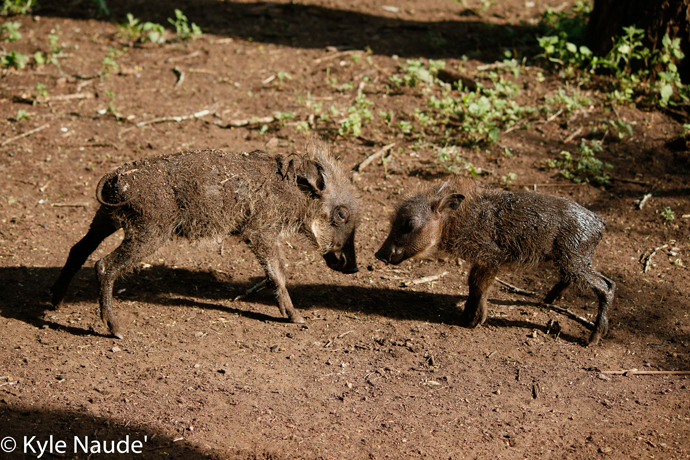
Sizzles came to us when he somehow ended up in the garden of a staff member in the northern part of Manyoni Private Game Reserve all by himself. His mother was nowhere to be found and Clair and Kyle volunteered to adopt him. Shortly afterwards, we received another call from a property outside the game reserve where a mother warthog had been hit by a vehicle, and one baby warthog had been rescued.

This little baby was Peanut. Peanut was in a bad state as she arrived severely dehydrated. Luckily Clair and Kyle had already been polishing their rescue skills with Sizzles and they were able to nurse her back to health with some veterinary assistance.
Taking care of a rescued animal is no easy feat. Many wild animals that are rescued don’t survive and, though people are generally well-intentioned, caring for rescued animals takes specialised knowledge and lots and lots of time. Clair and Kyle have been successful, because they have sought and followed veterinary advice and have relied on the support of many other people for assistance when their own schedules were busy.
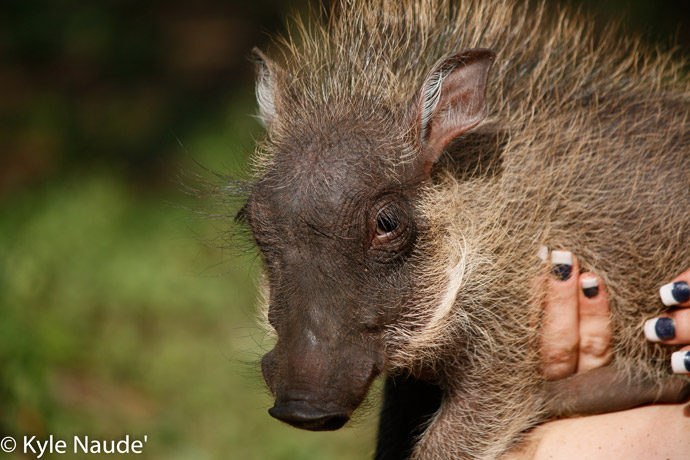
A strict schedule of feedings, every two hours for Sizzles and Peanut when they were very little (this includes the middle of the night!), left caretakers exhausted. Sizzles and Peanut first subsisted on a special milk formula that Clair and Kyle had to mix up using fresh cream, egg yolks, full cream milk, a special protein powder (to keep the stomach lined and working properly) and liquid vitamins. Beyond feeding, keeping a constant eye on them as they got their daily fill of exercise was a full-time job in itself.
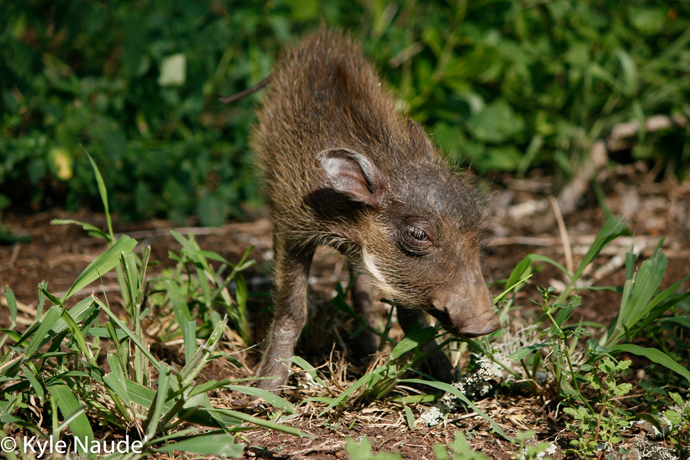
As they got stronger and braver, both warthogs started following their adoptive parents around the lodge. One of the greatest treats for our guests was seeing Kyle or Clair walk around the corner into the lodge and then shortly after, two adorable baby warthogs racing in after them.
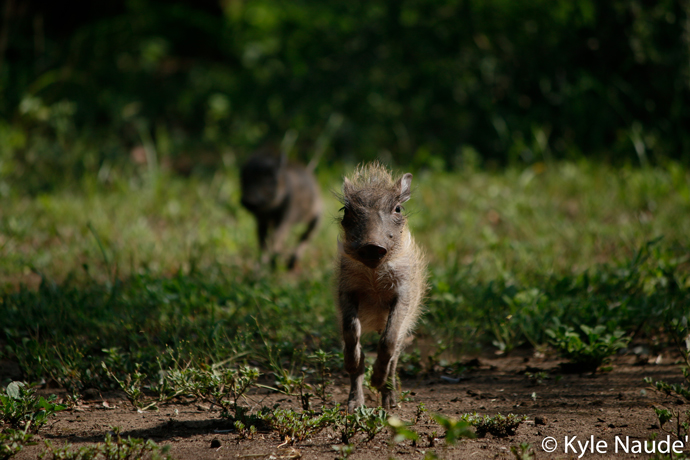
While it is a privilege to spend time with these two baby warthogs, the ultimate goal is for them to be able to survive in the bush and to live on their own. They are spending more and more time each day wandering on their own through the lodge grounds, grazing and encountering other warthogs.
Until then, the team at Rhino River Lodge and our guests are enjoying getting to see the shenanigans of these two warthogs as they grow in their independence. One of Clair’s favorite new tricks is when Sizzles and Peanut recently started doing spins, “as I call it, their dance moves,” says Clair.
“They run up to me and stop and then spin in circles whilst bouncing.” But for Clair, their cutest trait at the moment is when they are tired. “They will go into my house and find anything that smells like me or Kyle and nudge it until they fall asleep. If we are home at the time they will nudge and suckle and lick on our legs until they eventually pass out.”
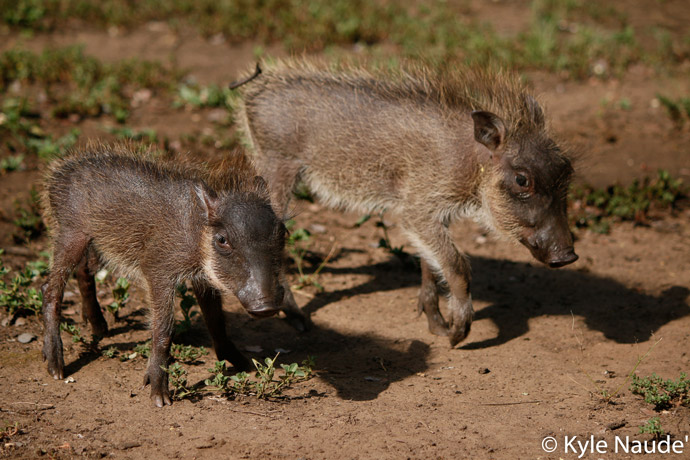
While all these interactions are rewarding and the Rhino River Lodge team is enjoying having the two little warthogs as part of our family, we are all rooting for them to return to the bush in the not too distant future.
Originally published at Africa Geographic.

Sizzles came to us when he somehow ended up in the garden of a staff member in the northern part of Manyoni Private Game Reserve all by himself. His mother was nowhere to be found and Clair and Kyle volunteered to adopt him. Shortly afterwards, we received another call from a property outside the game reserve where a mother warthog had been hit by a vehicle, and one baby warthog had been rescued.

This little baby was Peanut. Peanut was in a bad state as she arrived severely dehydrated. Luckily Clair and Kyle had already been polishing their rescue skills with Sizzles and they were able to nurse her back to health with some veterinary assistance.
Taking care of a rescued animal is no easy feat. Many wild animals that are rescued don’t survive and, though people are generally well-intentioned, caring for rescued animals takes specialised knowledge and lots and lots of time. Clair and Kyle have been successful, because they have sought and followed veterinary advice and have relied on the support of many other people for assistance when their own schedules were busy.

A strict schedule of feedings, every two hours for Sizzles and Peanut when they were very little (this includes the middle of the night!), left caretakers exhausted. Sizzles and Peanut first subsisted on a special milk formula that Clair and Kyle had to mix up using fresh cream, egg yolks, full cream milk, a special protein powder (to keep the stomach lined and working properly) and liquid vitamins. Beyond feeding, keeping a constant eye on them as they got their daily fill of exercise was a full-time job in itself.

As they got stronger and braver, both warthogs started following their adoptive parents around the lodge. One of the greatest treats for our guests was seeing Kyle or Clair walk around the corner into the lodge and then shortly after, two adorable baby warthogs racing in after them.

While it is a privilege to spend time with these two baby warthogs, the ultimate goal is for them to be able to survive in the bush and to live on their own. They are spending more and more time each day wandering on their own through the lodge grounds, grazing and encountering other warthogs.
Until then, the team at Rhino River Lodge and our guests are enjoying getting to see the shenanigans of these two warthogs as they grow in their independence. One of Clair’s favorite new tricks is when Sizzles and Peanut recently started doing spins, “as I call it, their dance moves,” says Clair.
“They run up to me and stop and then spin in circles whilst bouncing.” But for Clair, their cutest trait at the moment is when they are tired. “They will go into my house and find anything that smells like me or Kyle and nudge it until they fall asleep. If we are home at the time they will nudge and suckle and lick on our legs until they eventually pass out.”

While all these interactions are rewarding and the Rhino River Lodge team is enjoying having the two little warthogs as part of our family, we are all rooting for them to return to the bush in the not too distant future.
Originally published at Africa Geographic.
Subscribe to:
Comments (Atom)



